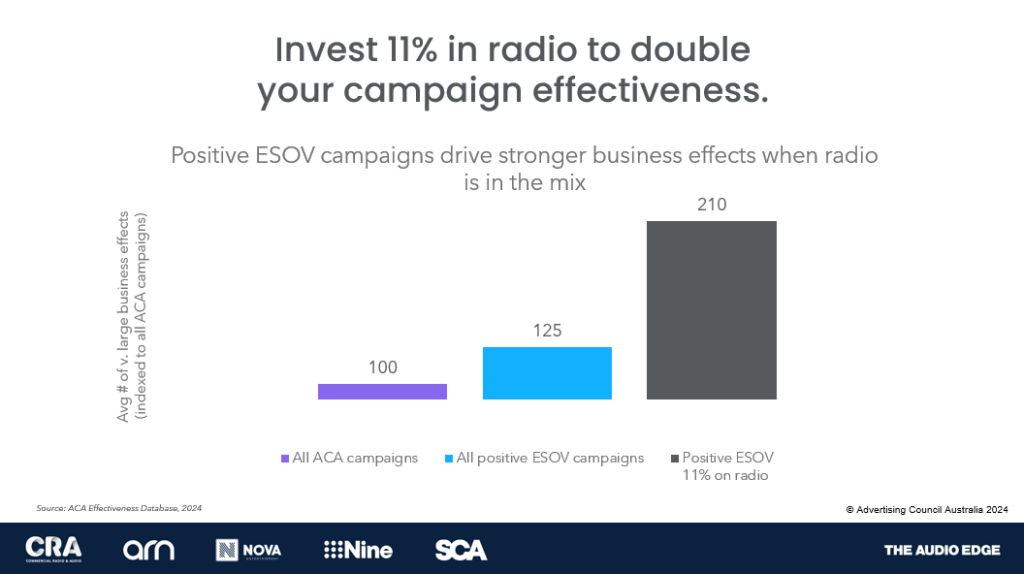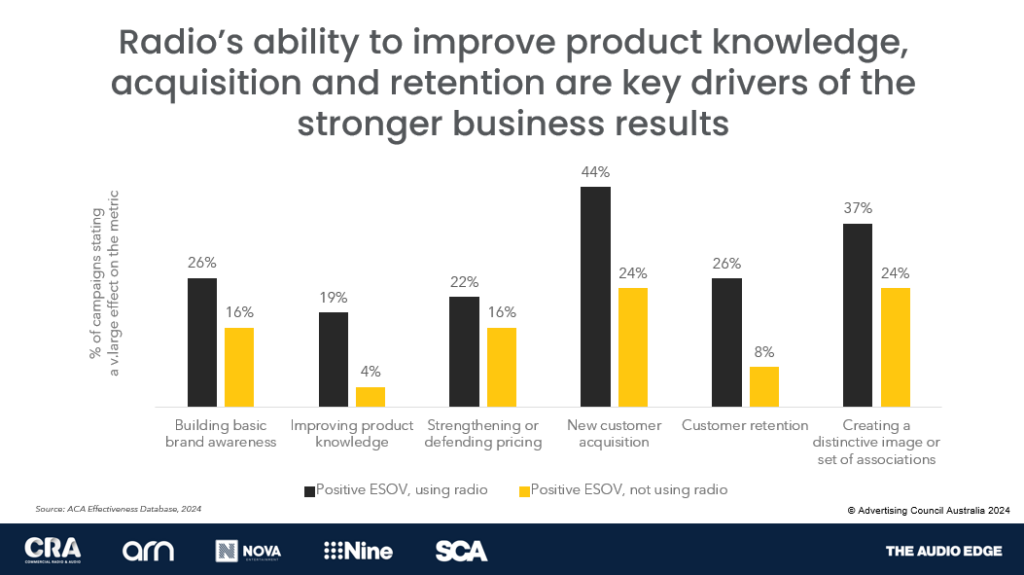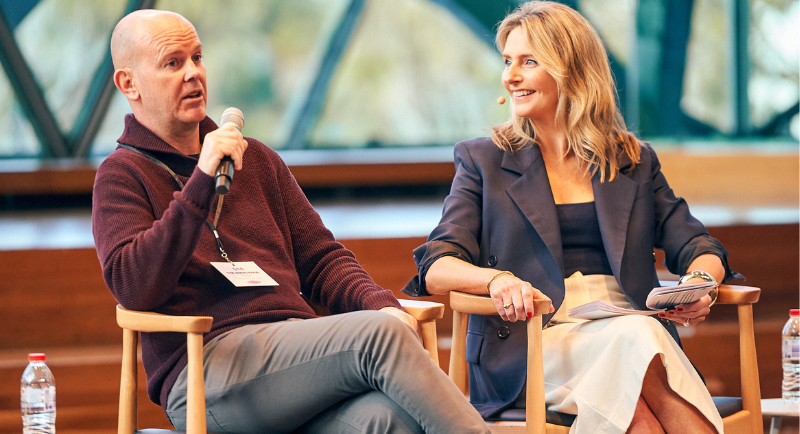At a recent Commercial Radio & Audio (CRA) event, The Audio Edge, marketing consultant Rob Brittain spoke about the radio sector’s campaign, Invest 11% to Double Your Effectiveness. This initiative, backed by a study in collaboration with marketing guru Mark Ritson, offered clear evidence of radio’s unparalleled ability to amplify advertising success. From these insights Mark Ritson coined the phrase “Radio, the ultimate sidekick.”
CRA and Mark Ritson approached the Ad Council of Australia with a hypothesis, radio improves the overall effectiveness of an advertising campaign. To test it the ACA Effectiveness Awards database was opened for the very first time.
Here are highlights from Brittain’s presentation, in his own words:
One of the things I loved about this approach was that radio wasn’t trying to be the hero. It was saying, “We play a role, and we believe we play a very strong role.”
To help understand the effectiveness of radio, we needed to control for a major driver of campaign effectiveness: Extra Share of Voice, or ESOV. Calculating Extra Share of Voice is simple; it’s just your Share of Voice minus your Share of Market.
ESOV is about marketing intensity; it essentially means that you’re advertising at a greater intensity. The lovely thing about it is that you can be a small brand, and you don’t have to outspend your larger competitors. You just need to spend a little bit more than your size.
But the thing that’s most relevant to this conversation now is that you can have positive extra share of voice, and you can fritter it away. Or you can spend it in channels where it genuinely works, and that’s really the crux. Did those campaigns that had extra share of voice become more effective with radio? Yes, they did.
In the Effie’s database, we’ve got around 500 case studies. What we found in those with positive ESOV was that there’s this sweet spot for radio, which was a spend of 11% of your campaign budget. We’re not claiming it’s a massive amount of the budget, but on average, it’s 11%.
But when we looked at those campaigns that, on average, invested 11% in radio, there was a huge difference in their effectiveness – it actually doubled.

We examined the data from big campaign budgets right down to the small ones. It applied regardless.
SMEs have been saying for a very long time that radio is effective, and it does have incredible effects on individual business metrics. We saw that in our study. One of the things that we do is, when people enter the Effies, they have to fill out a questionnaire that Peter Field and I developed.
We ask about the brand, but we also ask about hard business metrics. Everyone answers the same questions on the same scale. Across this huge plethora of campaigns, we have consistent information. That’s why the ACA Effectiveness database is gold dust.
One of the key things we see is around new customer acquisition, and that was where radio really shone. It worked well across everything, but new customer acquisition was the real sweet spot for it.

My challenge for advertisers, armed with this proof, is to do something different. If you’re an agency, put it in front of your clients. If you’re a client, what are you going to do differently?
Top photo: Rob Brittian and Andrea Salmon at CRA’s The Audio Edge event

